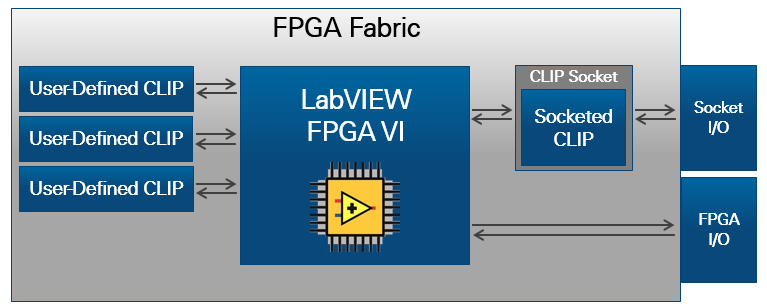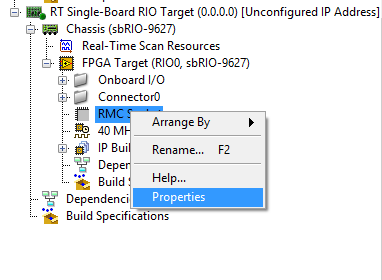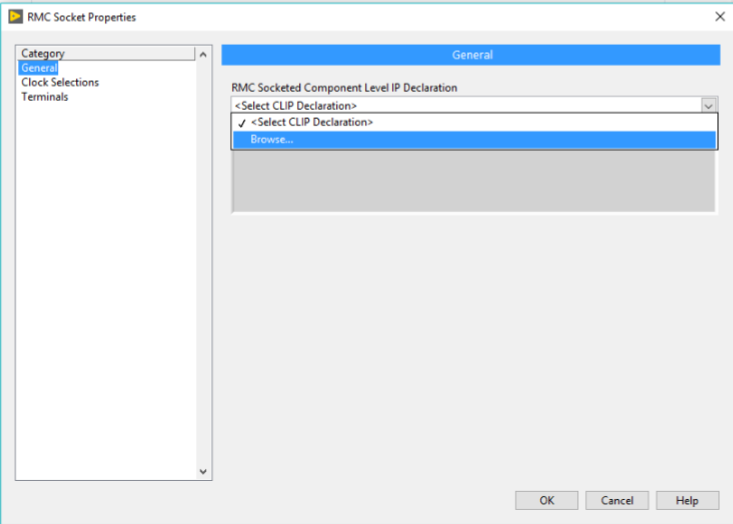To add optional peripheral interfaces to Project Explorer in LabVIEW, you will need to:
- Create a Socketed CLIP, which gives access to I/Os, that are not accessible from LabVIEW FPGA VI.

You may use sbRIO CLIP Generator, which is a tool included in the NI-RIO Driver, to automatically generate suitable socketed CLIP. (Detailed information about what a CLIP is, how to navigate through the sbRIO CLIP Generator you may find in the presentation attached to
this forum thread.)
- Return to LabVIEW, right-click RMC Socket under the FPGA Target, and select Properties.

- In the Socket Properties dialog box, select your CLIP and click OK.

The I/O, and ports selected in Socketed CLIP will appear under the socket in Project Explorer.
Additional Information
You can create your own RMC to integrate your own specific analog I/O, digital I/O, communication capabilities, and signal conditioning by combining these components onto a mating printed circuit board (PCB), known as an RIO MEZZANINE Card.
Detailed information about RMC design techniques, guidelines, and requirements can be found in
RIO MEZZANINE CARD DESIGN GUIDE.RMC Connector Pin Listing, RMC Connector Feature Set Compatibility, and electric connections are described in
sbRIO-9627 User Manual (starting page 37)